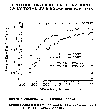
|
|
|
|
|
|
|
|
|
|
|
|
|
|
 |
|||||||
|
|
|
|
|
|
|
|
|
||
 Figure 1 - Infrared radiation window.
Source unknown.
Figure 1 - Infrared radiation window.
Source unknown.
 Figure 2 - Double danger from CFCs.
EPRI Journal, September, 1989.
Figure 2 - Double danger from CFCs.
EPRI Journal, September, 1989.
 Figure 3 - Atmospheric concentrations
and trends of halocarbons. Adapted from IPCC, 1992, 38.
Figure 3 - Atmospheric concentrations
and trends of halocarbons. Adapted from IPCC, 1992, 38.
 Figure 4 - CFC-11 and CFC-12
concentrations from 1978-1992. Dutton, E., NOAA (published in
Nature by Elkins et al, 1992).
Figure 4 - CFC-11 and CFC-12
concentrations from 1978-1992. Dutton, E., NOAA (published in
Nature by Elkins et al, 1992).
 Figure 5 - Annual grouwth rates
of CFC-11 and CFC-12 from 1978-1992. Elkins, et al, 1992: Nature.
Figure 5 - Annual grouwth rates
of CFC-11 and CFC-12 from 1978-1992. Elkins, et al, 1992: Nature.
 Figure 6 - Calculated UV spectrum of solar energy entering the atmosphere... (after C and E News. Nov 24,
1986)
Figure 6 - Calculated UV spectrum of solar energy entering the atmosphere... (after C and E News. Nov 24,
1986)
 Figure 7 - Change in biologically damaging
UV flux with change in ozone concentration...(after C and E News, Nov 24,
1986. )
Figure 7 - Change in biologically damaging
UV flux with change in ozone concentration...(after C and E News, Nov 24,
1986. )
 Figure 8 - Spectral distribution of ozone absorption and UV
increase. (Adapted from Kerr and McElroy, 1993: Science, Vol 262, 1032.)
Figure 8 - Spectral distribution of ozone absorption and UV
increase. (Adapted from Kerr and McElroy, 1993: Science, Vol 262, 1032.)
 Figure 9 - Spectral distribution of average daily total UV-B solar
energy flux. (adapted from Kerr and
McElroy, Science, 262, 1034, 1993)
Figure 9 - Spectral distribution of average daily total UV-B solar
energy flux. (adapted from Kerr and
McElroy, Science, 262, 1034, 1993)
 Figure 10 -
Regional average ozone depletion. Science. Vol.
256, Apr. 17 ,1992.
Figure 10 -
Regional average ozone depletion. Science. Vol.
256, Apr. 17 ,1992.
 Figure 11 - Measured (1960-1990) and
projected atmospheric concentrations of chlorine. (After C & E News,
May 24, 1993)
Figure 11 - Measured (1960-1990) and
projected atmospheric concentrations of chlorine. (After C & E News,
May 24, 1993)
 Figure 12 - Summary. Takle, G.S.,
1995.
Figure 12 - Summary. Takle, G.S.,
1995.
Related Class Images
 Biological
sensitivity and solar energy intensity as a function of wavelength.
Source unknown.
Biological
sensitivity and solar energy intensity as a function of wavelength.
Source unknown.
 Editorial cartoon.
Rowland, 1989: American Scientist, 77, 36. Permission granted Sigma Xi,
The Scientific Research Society.
Editorial cartoon.
Rowland, 1989: American Scientist, 77, 36. Permission granted Sigma Xi,
The Scientific Research Society.
 CFC timeline.
Earthquest, UCAR.
CFC timeline.
Earthquest, UCAR.
 Total Ozone for October 2, 1994.
Total Ozone for October 2, 1994.